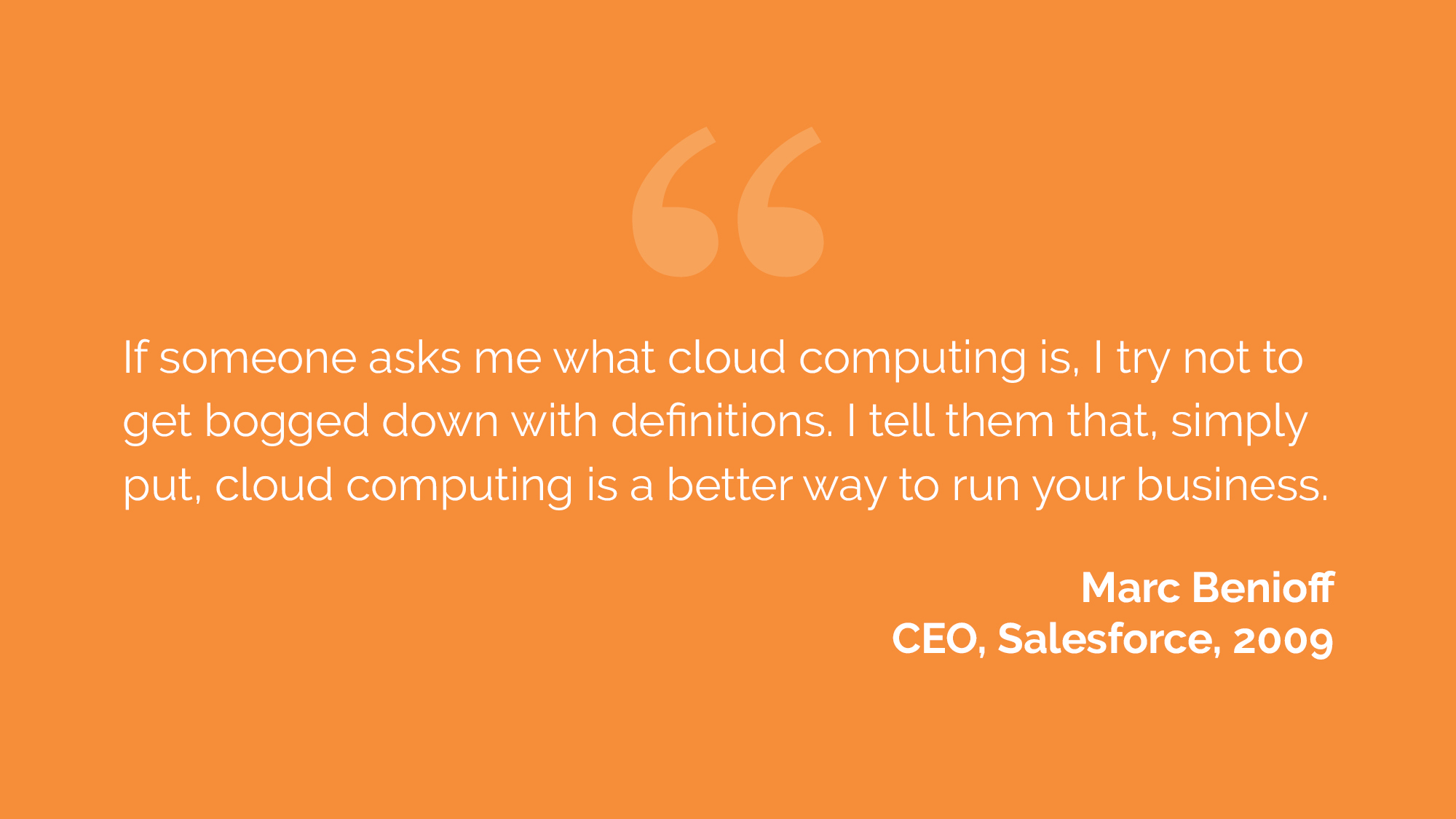
8 Reasons to Move Your Customer Email Platform to the Cloud
For telcos and service providers who have committed to the cloud, email hosting is often one of the first services to be transitioned. The reason for this is that running email platforms in-house is not usually a core business capability for the telco sector, so it makes sense to migrate email first.
If you’re a telco or service provider who has yet to move your customer email platform to the cloud, here are eight reasons to consider switching to cloud-hosted email sooner rather than later:
1. Scalability
Traditionally, an organisation’s ability to scale its email userbase, storage and compute power has been restricted by the size and power of its physical hardware. This has always represented a limitation for fast-moving telcos and service providers whose speed of growth outpaced their ability to procure, install and/or migrate to new equipment to expand their email system.
Hosting email in the cloud takes away this barrier to scalability. It allows telcos and service providers to stretch their computer resources on-demand, so that they can quickly scale their email muscle and user licence count up or down as needed.
2. Speed to market
The ability to release products and services to market quickly, without needing to wait for the purchase of hardware or the development of new platforms in-house, has created a newfound agility for organisations to innovate and deploy business improvements at unprecedented speed.
Chris Seller, CIO of Airservices Australia (a government organisation comprising 3,500 staff and responsible for governing the airspace where more than 4 million aircraft move annually), witnessed the results of this speed when he moved 135 applications (nearly one petabyte of data), to the cloud.
“While the deal doesn’t give Airservices a huge cost saving, around AU$1-2 million per year compared to building a similar capability in-house, the real advantage comes from the flexibility and agility Airservices now has as a result and that’s how more organisations should think about moving to the cloud… Provisioning of new environments is now down to hours instead of weeks.”
This speed to market is a godsend for both email administrators and email software companies that have always raced the
clock to fight spam, release security patches and roll out feature improvements and product roadmaps. With shorter delivery cycles and the ability to more quickly roll out change requests, fixes and product improvements, cloud email platforms are helping telcos and service providers retain a competitive edge.

3. Strategic value
Moving email to the cloud has strategic value on two levels. Firstly, it can fortify an organisation’s broader pro-cloud vision. Secondly, by freeing up in-house resources, it can allow an organisation to better focus on core business and strategic initiatives, rather than worrying about taming spam and maintaining email servers.
Singtel is a prime example of an innovative telco that has moved email to the cloud as part of both their pro-cloud vision and their desire to redirect valuable in-house resources. As the largest network operator in Singapore and the owner of 100 percent of Australia’s second largest telco (Optus) as well as 32.15 percent of India’s second largest carrier (Bharti Airtel), the company has been on a cloud journey since 2009, when it announced that it was collaborating with local partners to help establish Singapore as a regional cloud computing hub. Since that time, Singtel has:
- Rolled out a private cloud computing infrastructure on a whole-of-government basis (2012);
- Partnered with Microsoft Azure, Amazon Web Services and Google Cloud Platform in the United States;
- Established a secure private connection with Google Cloud Platform in Singapore, Hong Kong and Japan;
- Signed a deal with Alibaba Cloud in China to extend coverage of Singtel Cloud Access to six major public clouds across 30 global cities (2017);
- Won awards for their cloud services; and
- Joined forces with atmail to move its customer email platform to an AWS-powered cloud (2018).
In Singtel’s case, the motivation for transitioning email to the cloud was as much of a strategic play as it was a decision about: scalability; branding; end-of-life software/hardware replacement; moving from a CAPEX to an OPEX model; solving a talent shortage; and choosing a reliable email platform that enabled monetisation.
4. Reduced costs
It’s easy to gather examples of how moving applications to the cloud can save money. For example:
- AOL’s move of mission-critical workloads to the cloud meant that the company was able to extend its global reach
and save millions of dollars on energy resources, when it closed data centres and decommissioned about 14,000 in-house and co-located servers; - VTC Intecom, Vietnam’s top mobile digital content provider and one of the country’s leading e-payment services companies, saved approximately 60 percent in infrastructure and operation costs, compared with establishing
data centres, transmission lines and operations in its target countries; and - U.S. General Services cut their email system cost by over 50 percent by moving their email to the cloud.
Whilst moving applications to the cloud does has the potential to reduce an organisation’s costs, the reality is that each telco and service provider needs to review their own unique set of circumstances, priorities, resources, budgets, customer requirements and TCO (Total Cost of Ownership), to determine if moving email to the cloud will result in reduced costs for their particular organisation.
5. Cost effectiveness
Beyond TCO, the more consistent argument for moving email to the cloud is cost-effectiveness. More specifically, the cost-effectiveness of three key elements: OPEX; capped costs; and opportunity cost.
OPEX
In an era where telcos are competing with rapidly-evolving, over-the-top (OTT) media services, it no longer makes financial sense to outlay significant hardware and software costs upfront in a CAPEX model, if it can be avoided. This is especially true for telcos and service providers who have higher priority CAPEX outlays (e.g. for the provision of networks, usage capture and billing processes).
Capped Costs
I.T. department heads know that email management consumes an exorbitant chunk of their team’s time, but they’ve typically neither calculated the full costs nor adequately restricted the expenditure. As a result, in-house, on-premises email has traditionally been a black hole for uncapped costs. Examples include:
- Emergency replacement of failed servers;
- Urgent storage costs when servers fill up more quickly than anticipated;
- Staff overtime costs to fight outages and urgent spam/security issues;
- Lost productivity and staff replacement costs when team members leave; and
- Unexpected bills for the recruitment and training of new team members.
Cloud email hosted by external experts, on an agreed contract, allows organisations to more accurately estimate their projected costs, plus better adhere to agreed budgets.
Opportunity Cost
Any diversion of resources to manage an in-house email platform becomes a lost opportunity cost when organisations cannot use those resources elsewhere in more strategic parts of the business. Whilst it might be difficult to quantify this lost opportunity cost, it’s akin to sending the chefs at a restaurant out to wait on tables. Whilst chefs know how to serve the food, they’re unlikely to be as proficient as professional waiters and it’s neither the best use of their time nor expertise.
6. Staffing
Staffing a large-scale, on-premises email platform is a significant burden. First, there is the huge price tag. Second, there is the management load to recruit, train, manage, mentor, replace, retrain and complete admin for the in-house email team.
Price Tag
With anywhere from two to ten team members running an in-house platform (plus the time of ancillary team members and advisors), staff wages and overheads can quickly eclipse the cost of the email licensing itself.
Staff wages include salaries, superannuation/ 401k contributions, leave loading, payroll tax, lost productivity due to paid leave, and more. Staff overheads include personal workstations, desks, chairs, power consumption and general amenities (including coffee, kitchen fridge running costs, cleaners and even the soap at the sink).
Yet surprisingly, these costs are regularly forgotten in TCO calculations when telcos and service providers make financial decisions about their email systems. Plus, there is the direct and indirect price paid for recruitment, training, management, mentoring, replacing, retraining and administration. It all adds up.
Management Load
There is a hefty investment of management time and effort needed to manage an in-house team, which could arguably be more strategically spent elsewhere. There is also an accompanying level of anxiety and stress, which seems unwarranted when
email is not a core business focus.
In addition to the headache of finding replacement team members, the very need for staff comprises a sizeable business risk that assumes there will always be enough available talent to keep an on-premises platform running smoothly. Granted, moving email to the cloud retains some staffing costs. However, the costs are much reduced, plus the burden, risks and platform anguish are largely transferred to the cloud email provider.

7. Security
Reputable, cloud-hosted email can provide the following security benefits:
- Faster and more effective resolution of security issues
- Vendors can push security fixes and features to the cloud as soon as they are available, which significantly reduces the risk of unnecessary security vulnerabilities;
- In-house teams, who are not routinely email security experts, no longer need to scramble to create interim security patches while they wait for slow vendor releases;
- No end-of-life security or compliance concerns
- Cloud-hosted email solves a longstanding problem of in-house teams neglecting to update or replace software on time and thus leaving telcos and service providers exposed to security and compliance breaches;
- Greater ability to add more security layers
- Antispam, antivirus, anti phishing and other premium offerings can generally be added easily on-demand in a cloud-hosted environment;
- Compliance options
- General Data Protection Regulation (GDPR), Lawful Interception (LI) and other compliance options can be offered out of the box and do not need to be reinvented by in-house teams; and
- Robust security
- Email vendors typically devote more resources to email security than in-house teams who are juggling email on top
of their core business responsibilities.
- Email vendors typically devote more resources to email security than in-house teams who are juggling email on top
So, if the number one reason that CTOs and CIOs lose sleep at night is data security, then moving email to the cloud could dispense a good antidote for their insomnia.
8. Uptime and service
Uptime
From a reliability perspective, downtime can be the kiss of death to a cloud email provider. This provides extra incentive for them to enforce measures that protect their uptime, reputation and business. For telcos and service providers wanting an even higher level of uptime guarantee, cloud email providers can also typically offer a multiple redundant site option, which is something that many on-premises providers simply could not afford under a CAPEX model.
From a resourcing perspective, the on-demand nature of cloud also facilitates uptime. This is because unlike in an on-premises model, telcos and service providers should not experience downtime due to an overload in their capacity. Instead, they can easily scale up to handle service peaks and therefore maintain high performance levels at all times.
Service
Cloud email providers who depend on ongoing subscription payments tend to offer better ongoing service than companies that sell one-off hardware and software licences. This is because if they do not deliver the service each month that is promised in
their Service Level Agreement (SLA), they risk a buyer withholding monthly payments and/or moving to another provider.
For this reason, cloud email providers are gaining a reputation for excellent ongoing customer care and service. This
is good news not just for the end user experience, but for in-house managers and I.T. teams who want to move their email
to the cloud – and still sleep at night.
[Free white paper]
The Business Case for Moving Email to the Cloud
If you’re a telco or service provider that is looking to move your customer email platform to the cloud, you’re in the right place.
We invite you to download our complimentary white paper:

New to atmail?
With 20 years of email platform experience, we are trusted by telcos and service providers to power 170 million mailboxes worldwide. We offer white label, user-friendly, cloud hosted email that is reliable, stable, secure and scalable. Choose from our US or (GDPR compliant) EU data centres, or stay in-house with our on-premises webmail and/or mail server options. To find out more, please contact us here.

